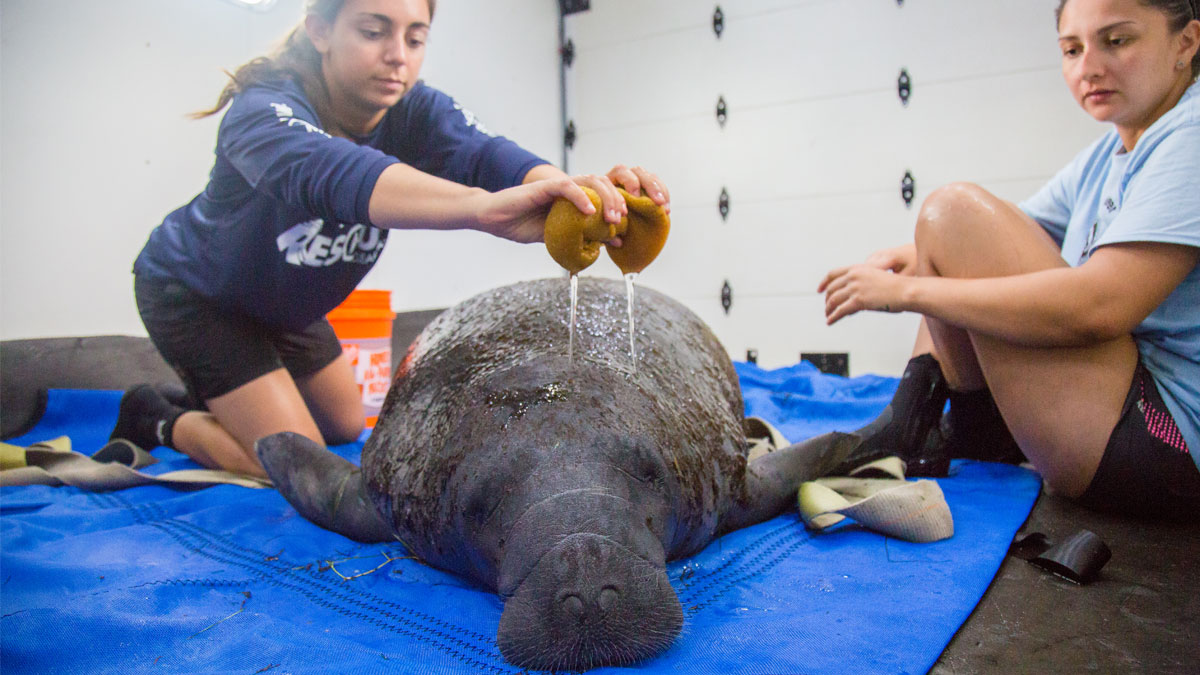
Permit No. MA770191
CMA’s Rescue Team is dedicated to the rescue, rehabilitation, and release of marine life. Our team is composed of biologists, interns, and over 100 volunteers who care about the marine environment and the impact of human activity on marine life. Team activities include responses to, and documentation of, stranding events involving live and deceased sea turtles, manatees, cetaceans, and river otters.
How Does the Rescue Team Stay Prepared?
Stranding preparedness involves the management of equipment and supplies and up-to-date team training, which is an important aspect of the job in order to ensure prompt and effective field responses to stranding events. To remain current in the field, our team routinely reviews relevant published material, attends conferences and workshops, and collaborates with network facilities on inter-institutional training.
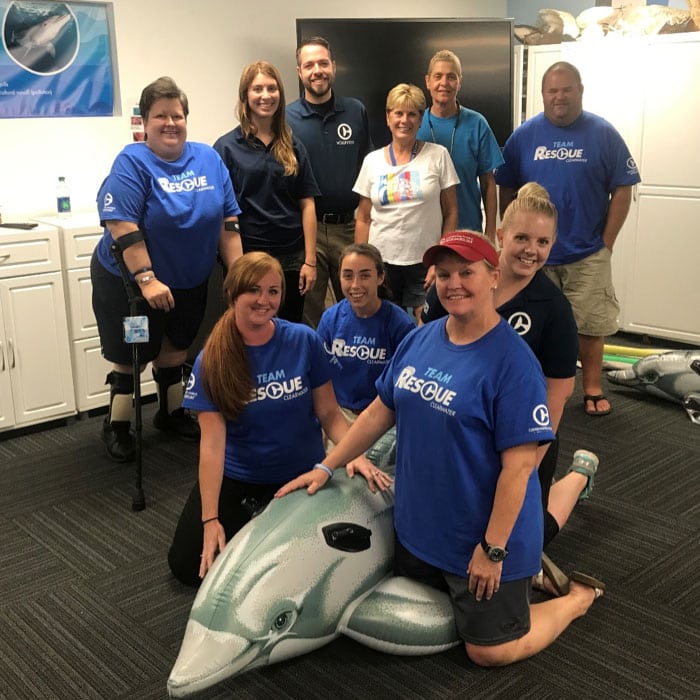
To achieve proper stranding preparedness, our team conducts daily, weekly, monthly, and annuals inspections and inventories on all equipment and supplies required for the different types of responses such as triage and transport of live dolphin or necropsy and transport of carcasses. Routine inspections and inventories are vital to our operations because the team must ensure the safety of both humans and animals, which requires specialized equipment that is fully tested, functional, and rapidly available. Additionally, when CMA transports cetaceans or manatees in the Rescue Van it needs to be thoroughly cleaned, sanitized, restocked, and inspected because we may need to respond to another call that same day. If you visit CMA, you may see Rescue interns and volunteers inside the Rescue Truck checking that all the equipment is present and working.
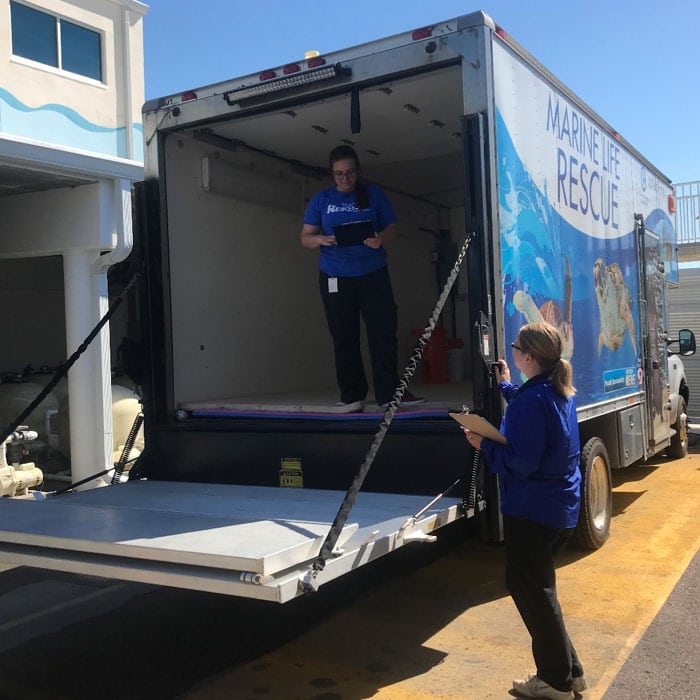
How Do We Receive Reports of Animals in Distress?
In the majority of cases, a member of the public reports the case to our 24-hour stranding hotline (727-441-1790 extension 1). After the caller provides a detailed message on the stranding hotline, the team returns the call within a 15-minute period to confirm the information and begin the response. The team will receive additional information such as the species, number of animals, location and behavior of the animal as well as footage such as video and photographs. A video or photograph can provide the most accurate information to help us determine what we need to prepare for, such as the size of the animal, injuries, environmental conditions, etc.
Determining the Appropriate Rescue Response
Once the team has the most vital information about the stranding event, the Rescue Team staff will work with Florida Fish and Wildlife Conservation Commission (FWC) or National Marine Fisheries Service (NMFS) to determine the best course of action, which may include: immediate response, monitoring efforts, or no intervention. On occasion, animals may exhibit normal behavior that is perceived by members of the public as distress. For example, during summer months female manatees go into estrus (a period of fertility) and are pursued by numerous male manatees. This group made up of a focal female and up to 25 males are known as a mating herd. The female can go into very shallow waters to avoid males and people perceive them as stranded or in distress. The best thing to do in these cases is to not disturb their natural behavior and keep a safe distance while appreciating these creatures.
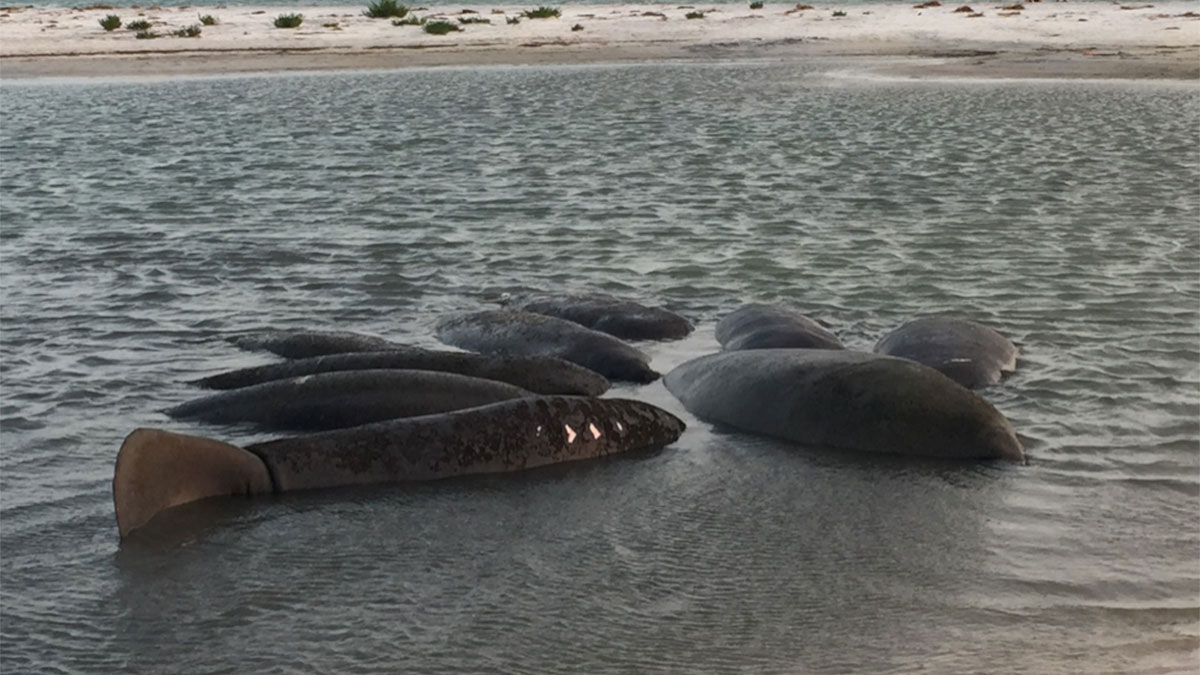
It is important to note that many reports require an immediate response. For example, on the evening of July 3, 2016, rescue personnel received a call regarding a live stranded bottlenose dolphin (Tursiops truncatus) in a mudflat 300 yards from the shoreline of the southeast side of the Fred Howard Causeway. The dolphin, nicknamed “Howie” appeared to be in good body condition with no obvious external injuries, and was responsive and alert to its surroundings. Once all samples and photographs were obtained, NMFS approved the transport of the animal on a closed cell-foam mat across the mudflat to be released in deeper water.
National Marine Fisheries Service (NMFS), is a government branch of NOAA, the National Oceanic and Atmospheric Administration, which is responsible for the jurisdiction of marine mammals. With any live stranded cetacean, NMFS is immediately contacted to ensure they are aware of the situation. They also provide valuable guidance and direct the stranding team on how to proceed in caring for live stranded dolphins.
From Rescue to Rehabilitation
In certain cases, rehabilitation may be the best course of action depending on the age, specie, and condition of the animal. On July 4, 2014, the Florida Fish and Wildlife Conservation Commission’s Marine Mammal Pathobiology Laboratory rescued a female Atlantic spotted dolphin (Stenella frontalis) on Redington Beach, Florida. The animal was in critical condition, weak and malnourished and transported to CMA for rehabilitation. After six months of rehabilitation, NMFS declared the one-year-old Stenella dolphin as non-releasable because of her young age at stranding and lack of survival skills. NMFS selected a nonprofit marine mammal education and research facility in the Florida Keys as her permanent residence.
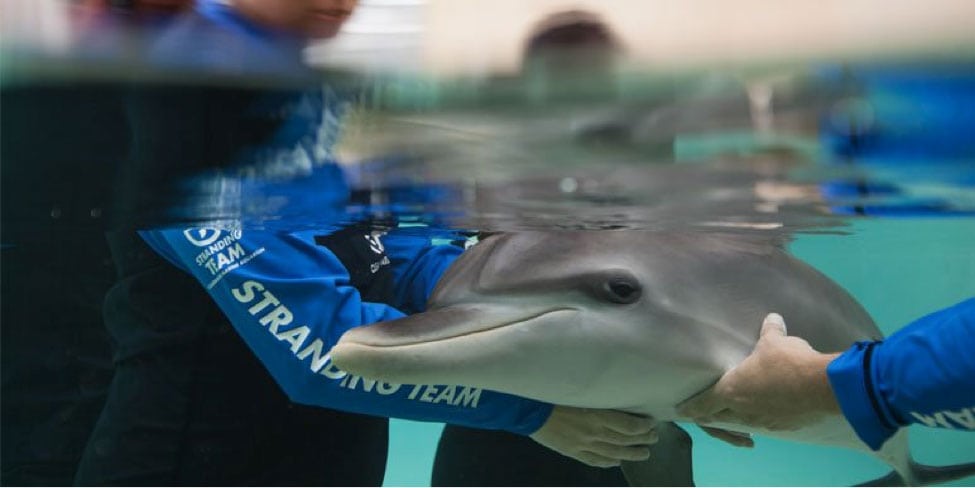
Monitoring Before Intervention
Some responses require a period of monitoring to establish if an intervention is necessary. For example, on February 8, 2018, CMA received the report of an entangled dolphin on Bell Isle Canal on Belleair Beach, FL. CMA located the animal and identified him as “Lenny” a male bottlenose dolphin that has been part of CMA’s photo identification program since 2014. Lenny was dragging line that appeared attached at the leading edge of both tail flukes. However, the ability to swim did not appear compromised and body condition looked normal. The entanglement was reported to National Marine Fisheries Service (NMFS) and stranding network partners, and daily searches for Lenny were conducted. After a week, Lenny began exhibiting abnormal behavior, including abnormal surfacing. NMFS veterinarians deemed Lenny’s entanglement as life-threatening and intervention was planned for the week of Feb. 19. On February 22, CMA, in conjunction with Southeast U.S. Stranding Network partners and the Clearwater Police Department, successfully intervened. Lenny was disentangled and deemed suitable for immediate release.
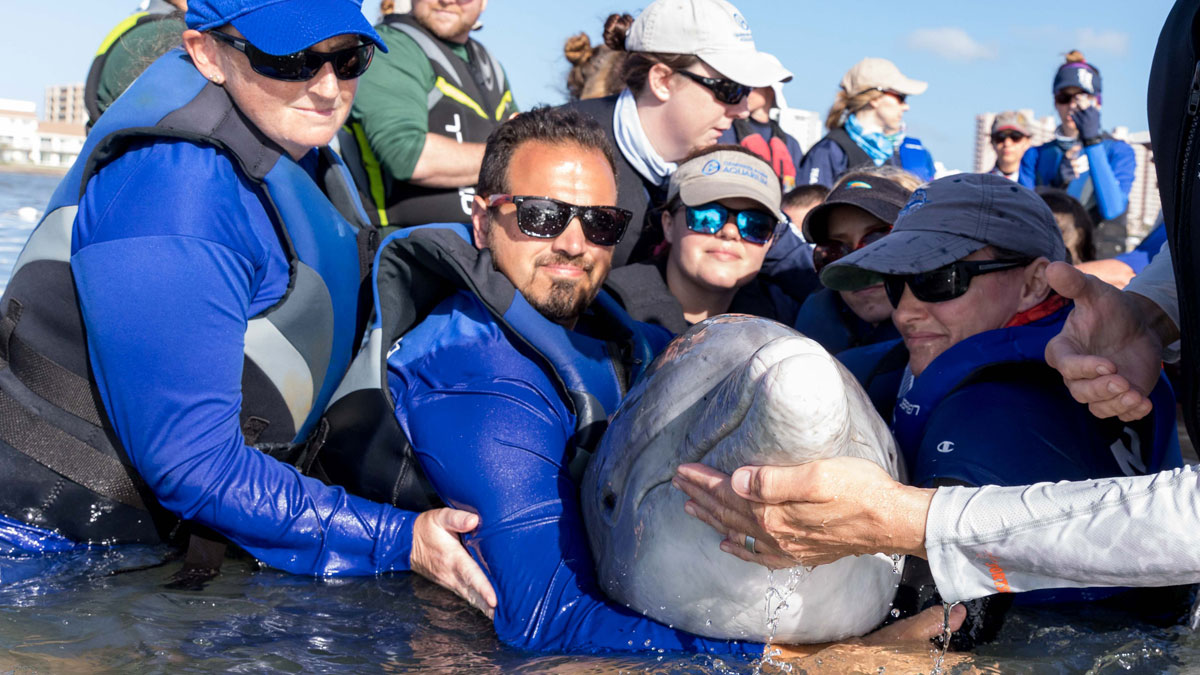
Remember to always call the 24-hour rescue hotline if you find any marine life in distress in the Tampa Bay area (727-441-1790 ext. 1). If you would like to be part of our Rescue Team, please learn about our volunteer opportunities!